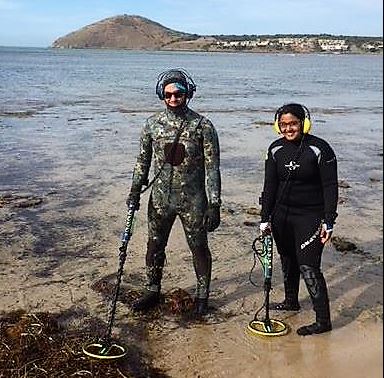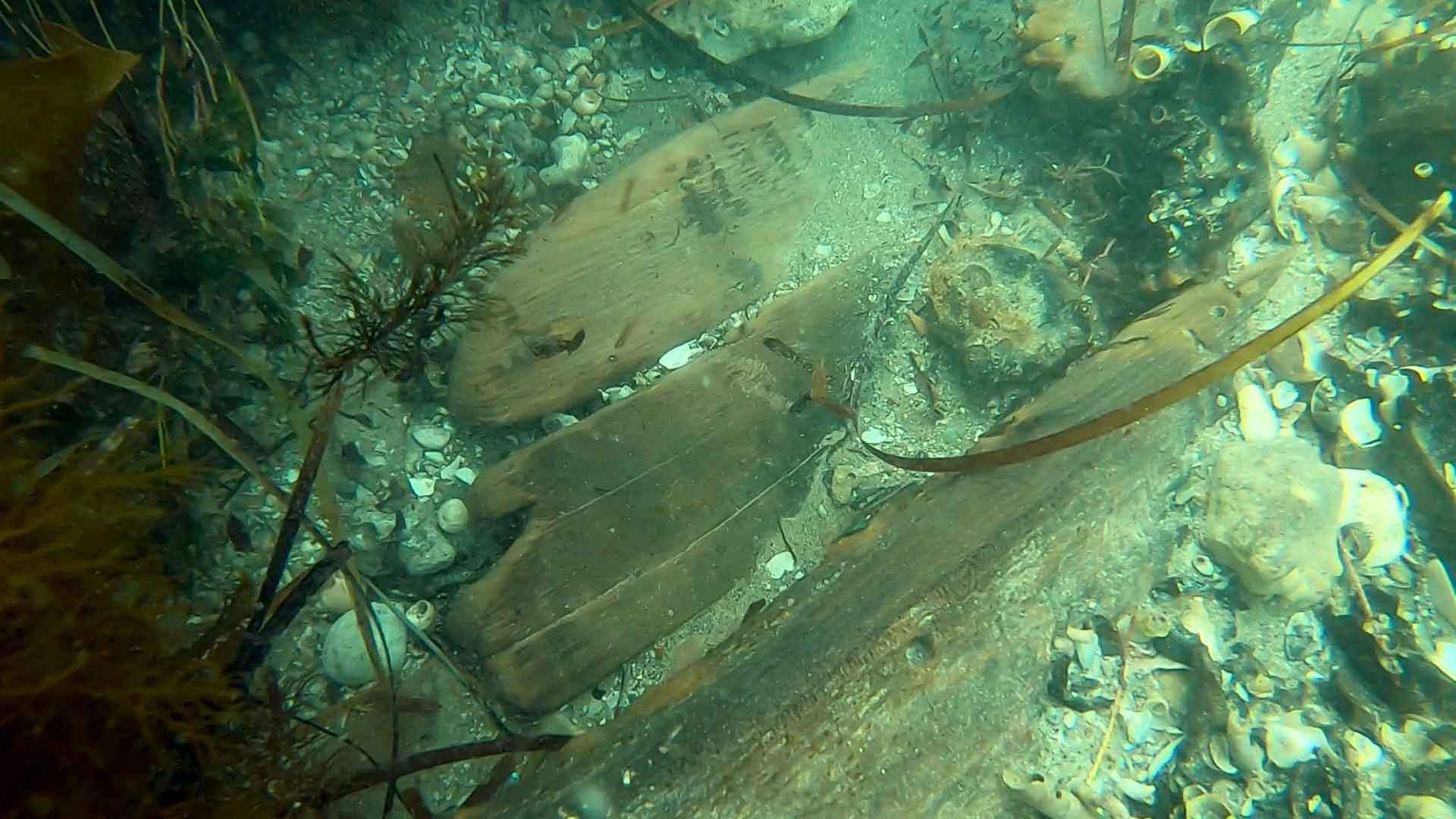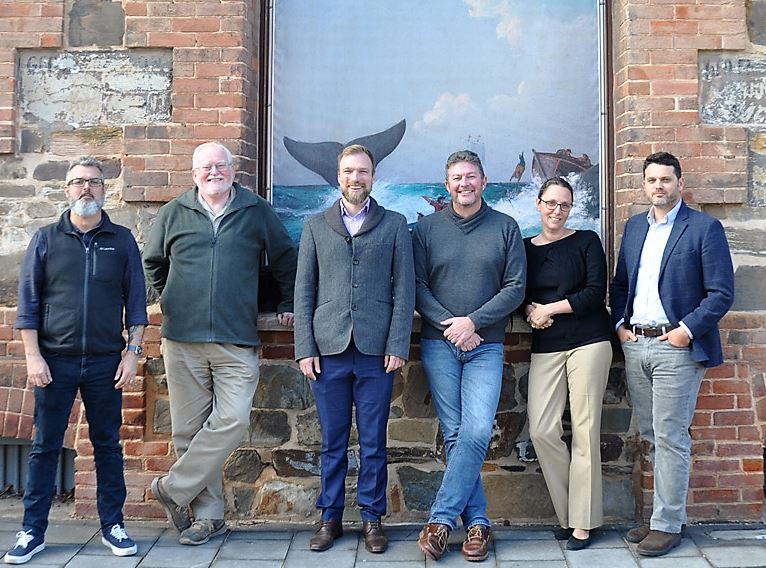
Flinders archaeology has helped locate and explore the site of South Australia’s oldest shipwreck at Encounter Bay near Victor Harbor.
The barque South Australian was driven ashore in a storm on 8 December 1837 while anchored in Rosetta Harbor at Encounter Bay, but its exact location remained a mystery until this year.
Diligent underwater investigations by a collaborative team, including Flinders University maritime archaeology students and academics, were part of renewed investigations earlier this year.
Magnetometer searches in the 1990s failed to locate the wreck site but the pilot project between April 16 and 20, comprising new magnetometer searches and metal detector surveys by SCUBA diving, snorkelling and walking, led to the discovery.
Project partners include the State Government heritage branch in the Department for Environment and Water, Silentworld Foundation, Australian National Maritime Museum, South Australian Maritime Museum, and the MaP Fund with support from Heritage Detection Australia and MineLab.
South Australian was one of the early vessels acquired by the South Australian Company to bring free settlers to South Australia in 1836-37, making it an important part of our state’s history.
It is the first shipwreck recorded after South Australia was established as a colony, and also believed to be one of the earliest recorded wrecks of a free-settlement immigration ship in Australia.
In a move to protect the historic wreck, the State Government has enforced a 30m radius protected zone in Rosetta Harbor while further archaeological work is done. Investigators are due to meet at the SA Maritime Museum this week to start planning further research.
With support from the Maritime Archaeology Project (MaP) Fund, Adjunct Associate Professor Mark Staniforth says Flinders University students Maddy Chandrasekaran, Adeena Fowke and Tim Zapor were among those who helped on the project.

Flinders PhD Dr James Hunter, now curator at the Australian National Maritime Museum, joined Adjunct Associate Professor Staniforth and other Flinders postgraduates, staff and supporters at a followup meeting in Port Adelaide of the South Australian Shipwreck Working Group.
The 12 July at the South Australian Maritime Museum included initial discussions on future work on the South Australian wreck site, including possible aerial surveillance.
Adjunct Associate Professor Mark Staniforth, also a PhD Archaeology graduate from Flinders and former Head of the University’s Maritime Archaeology Program, joined Associate Professor Wendy Van Duivenvoorde and Dr Jonathan Benjamin, from the Maritime Archaeology Program, Dr Adam Patterson, Flinders Archaeology PhD and now Curator at the SA Maritime Museum and Mr Rick Bullers, who completed a Master of Maritime Archaeology at Flinders University and is now Maritime Heritage Officer at the SA Department of Environment and Water.
The ever-growing Maritime Archaeology research group at Flinders has been important in a range of marine science and underwater archaeology investigations in South Australia, including diving at the Star of Greece wreck at Port Willunga for the past 20 years.

This year marks the 150th anniversary of Star of Greece being built in Belfast, and 13 July is the 130th anniversary of its sinking just off the beach at Port Willunga, in a violent storm that lashed the coast in 1888.
A program of Star of Greece commemoration events has been planned from Thursday to Sunday this week.
A Star of Greece Wreath Laying and Plaque Dedication Ceremony, commemorating the 18 men who died when the vessel sank, will be held at Aldinga Uniting Church, Old Coach Road, Aldinga, at 10am on Friday 13 July.
Paul Simpson, author of the book Star of Greece: For Profit & Glory (2017) will deliver a presentation at Aldinga Library, at 2pm on Friday 13 July, talking about the tragic events that unfolded on the fateful day when the ship sank. This is a free event but bookings are essential.

